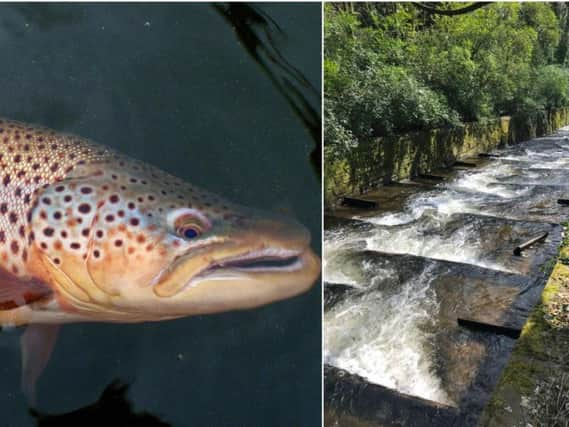Why Yorkshire Water has spent £41,000 on upgrades for Calderdale fish


The company has built a new fish pass at Salterhebble in Calderdale to allow brown trout to swim upstream into Hebble Brook from the River Calder.
The pass was commissioned by the company, with technical support from the Environment Agency.
What will the fish pass do?
Advertisement
Hide AdAdvertisement
Hide AdThe structures will create habitat in the river where there was none before. This is expected to improve the local environment in as well as allow fish to migrate upstream
Yorkshire Water's Ecology Advisor, Ben Gillespie, said: “We are thrilled to open another fish pass as we continue our commitment to improving the local environment and help our fish thrive. Due to its size this pass is particularly impressive and we hope will make a real difference to the brown trout in the area but also the entire local environment.”
Whilst fish passes usually involve providing fish with a route through or around weirs that stand in their way, at Salterhebble a series of baffles have been installed to allow fish to swim along a 200m long section of river where the natural river bed had been replaced with brick and the banks with walls.
This meant that water velocities were much higher than they would be naturally. There were no deeper pools where fish could shelter and all gravel and cobble was swept down the brook, into the River Calder.
Advertisement
Hide AdAdvertisement
Hide AdA series of alternating notched baffles now extend at intervals across the channel. Fish are able to shelter behind the baffles as they steadily make their way upstream. Gravels are depositing in the slack water behind the baffles.
Jerome Masters, Fisheries Technical Specialist from the Environment Agency, said: “Rather than racing to the confluence, the waters within Hebble Brook now swirl and meander to create a variety of flow types, which will benefit fish and other wildlife. It will be fascinating to see how the brook develops now that we are mitigating against the worst effects of the historic channelisation.”